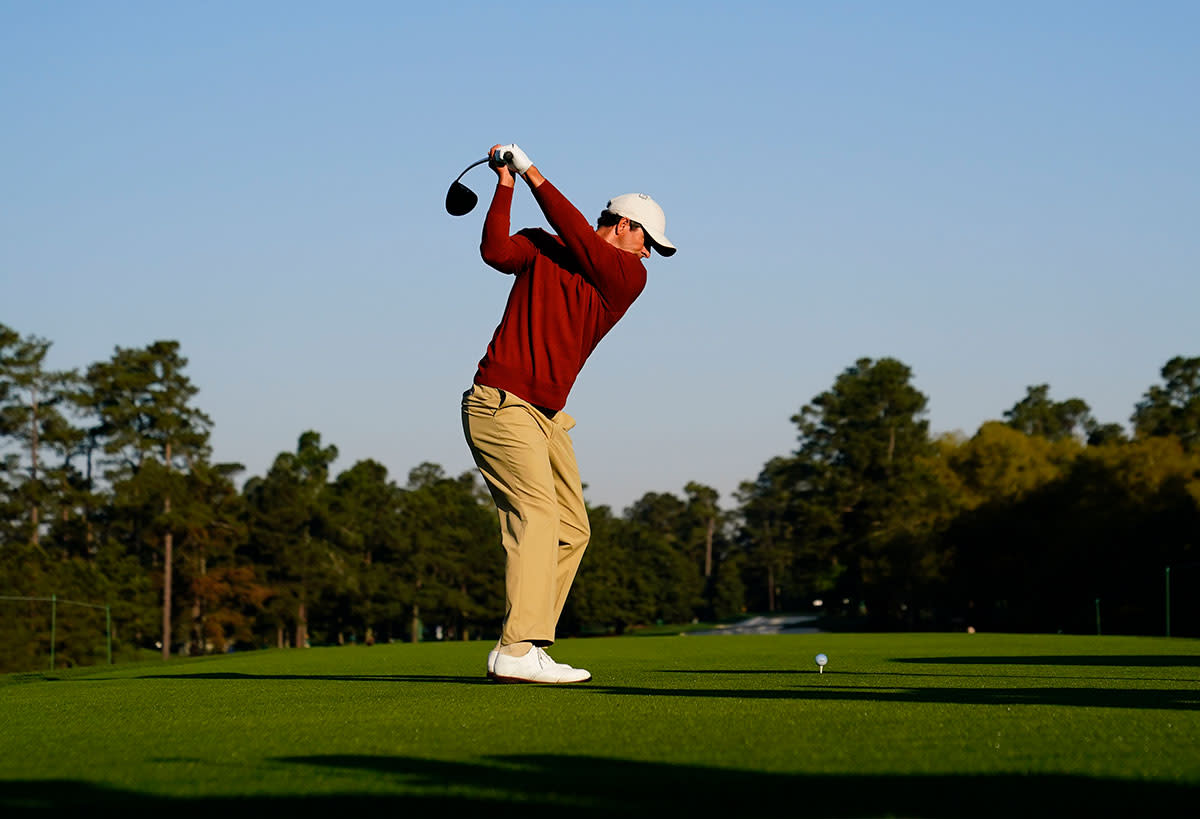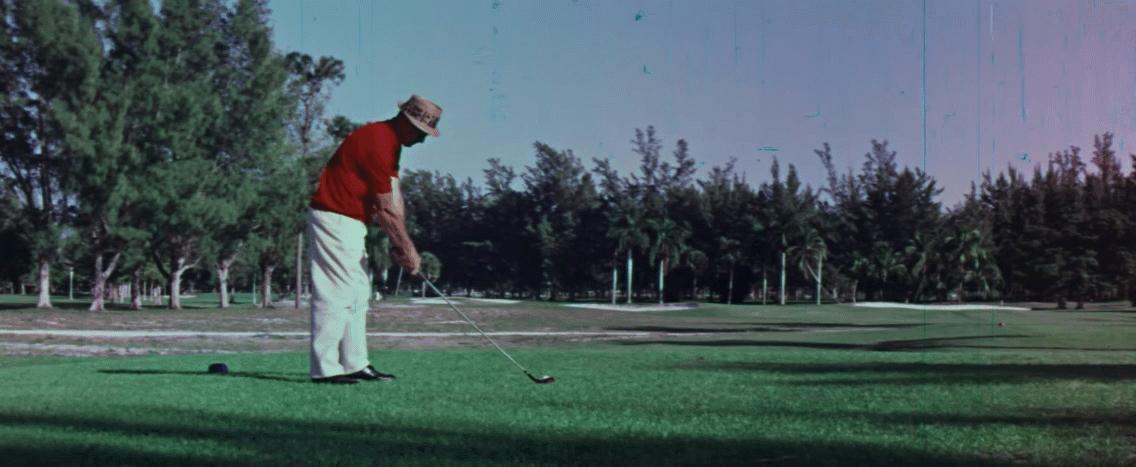17 Prettiest Golf Swings of All Time

Almost 25 years have passed since Pete McDaniel, a colleague of mine at Golf World, introduced me to Tiger Woods at the La Quinta Resort near Palm Springs during Thanksgiving weekend in 1996. Woods was back in southern California to play in the Skins Game, having won two of his first seven PGA starts as a pro since boarding the bullet train to superstardom, although he still unveiled himself like a displaced fratboy with his salty tongue and ultra-snappy wit.
McDaniel and I spent about 2-½ hours with Tiger and two of his buddies in his suite that Friday night. At some point well into the evening, one of those pals encouraged Woods to show off his swing impersonations, and for the next 10 or 15 minutes, young Eldrick put on a performance that would have astonished and amused any serious golf fan.
Fred Couples. Tom Lehman. Arnold Palmer. From the beginning of address to completion of the follow-through, Tiger’s imitations were flawless — exact to the tiniest nuance without a hint of becoming caricatures. To see this gangly kid mimicking the robustly built Palmer was utterly hilarious; a huge laugh filled the room when he nailed Arnie’s helicopter finish.
And so it is with a certain amount of guilt that Woods is omitted from this list of the 17 prettiest golf swings ever. Beauty is in the eye of the beholder, of course, still a profundity more than a cliché, which leaves lots of room to reason that Tiger’s violent rip was the handsomest of ‘em all, given the results it produced.
Touché, I suppose, although there’s a considerable difference between gorgeous and successful. Only a handful of the game’s icons qualify here, which might remind you of just how elegantly some players wielded a club.
17. Payne Stewart
More than two decades after Stewart’s tragic death, Paul Azinger will tell you his buddy had some of the greatest hands he’s ever seen. Graceful and unhurried, Stewart’s move featured a natural rhythm without an ounce of forced motion, as if the ball just happened to be in the way of his downswing. The knickers and tam o’shanter didn’t hurt the optics, either.
16. Adam Scott

All of Butch Harmon’s swing theories rolled into one nicely proportioned body. Scott has gained a few pounds over the years, but he still looks regal over his Titleist and has few, if any, flaws as a ballstriker. Basically, this is Tiger’s early-2000s action chiseled to perfection. We’ll skip a putting comparison….
15. Louise Suggs
Ben Hogan on Louise Suggs' golf swing:
— LKD (@LukeKerrDineen) October 20, 2021
“If I were to single out one woman in the world today as a model for any other woman aspiring to ideal golf form, it would be Miss Suggs. Her swing combines all the desirable elements of efficiency, timing and coordination." https://t.co/bNAwKHHBdb
Her long backswing was appropriated by huge body turn, creating a languid, fully controlled lash from the inside that generated far more speed than her LPGA contemporaries. Suggs won 61 times on the women’s tour, 11 of them majors. Watch her swing above. You’ll quickly understand why.
14. Retief Goosen
The first of three South Africans to make the list, all of whom fashioned swings built on three crucial ingredients: tempo, tempo and tempo. Despite the lack of overt, power-related characteristics, Goosen hit the ball a long way in his heyday, thanks to a vastly overlooked (and underrated) rotation of his core. Perhaps most significantly, the Goose was allergic to lunging at the ball. Some allergies are a lot better than others.
13. Tom Purtzer
Our first real example of how style doesn’t always add up to substance. Purtzer’s five PGA Tour victories belied his superb coordination from takeaway through contact. His natural skill was best exemplified by a perfect transition from the top of the backswing toward the contact zone. Purtzer now runs a golf school with his brother Paul — the perfect occupation for a guy who managed just three top-10 finishes in 41 major appearances.
12. George Knudson
Several of my advisors insisted on Knudson’s inclusion to this ranking. After viewing numerous versions of his fluid, leg-driven action, I could not disagree, as the Canadian delivered exceptional power to the strike despite a very short backswing, much like Tony Finau does today. If you’re a wristy 22 handicap tired of making doubles, there’s plenty of Knudson available on the internet. Dig in, choppers!
11. Ben Hogan
The disciples will say this is 10 spots too low, while many knowledgeable swing enthusiasts would claim he doesn’t belong on the list at all. Hogan’s flattish takeaway and powerful lower-body thrust en route to contact obviously worked wonderfully for him, but his torque-fueled transition wasn’t considered replicable or all that aesthetically appealing by some. He dug it out of the dirt, as legend goes, having discovered a way to avoid the hook that plagued his early days. With that in mind, Bantam Ben’s homemade power is cause enough to insert him here.
10. Jeff Maggert
Say what? You’re ranking a guy with three PGA Tour victories ahead of maybe the greatest ballstriker ever? Yes, indeed. Maggert’s compact, textbook form comes with nothing even close to wasted energy. His swing is virtually devoid of leg action, which is why he never drove it very far, which is probably why he has been more successful as a senior golfer. Maggert’s simple move is the visual opposite of watching your fellow members warming up on the range every Saturday morning.
9. Tom Weiskopf
As tall guys go, it is difficult to imagine anyone producing a more graceful brand of power. A man who stands 6 feet 3 must deal with a larger margin for error than those several inches shorter, but Weiskopf seemed to turn his height into an asset. His point-of-contact speed created enormous elevation with long irons, so when his head was right and his putter hot, he became a handful even Jack Nicklaus had trouble handling.
8. Steve Elkington
Despite winning two Players Championships and the 1995 PGA, Elkington is probably better known for his health issues and a golf swing to die for. He constantly battled sinus problems during the 1990s, when he claimed all 10 of his PGA Tour victories, but his impeccable tempo and classy finish were never indicative of a man under physical duress. Even from heavy rough, the Aussie extricated his ball like a player in total control. An overlooked example of grace on grass.
7. Louis Oosthuizen
Although he’s acclaimed far and wide as owning the most visually appealing swing today, Oosthuizen still hasn’t won a tournament in the United States (207 career PGA Tour starts). He came close to winning three of the four majors held in 2021 because his putter carried him as far as it could — Oostie led the Tour in strokes gained on the greens — so what gives? His statistics across the board were excellent. He has that enviable tempo and a perfect competitive demeanor. Are the golf gods simply jealous of how easy he makes the game appear?
6. Gene Littler
When it comes to sheer beauty in an era when swing analysis was nothing close to the industry it is now, Littler’s self-designed technique serves as a precursor to what many instructors teach today. The inside takeaway, the quiet right foot, the ability to stay behind the ball through impact—the little dude from San Diego didn’t rack up 29 PGA wins by accident. Littler was the only player Hogan would stop to watch hit practice balls. Anybody who tickled Hogan’s fancy earns prime real estate here.
5. Ernie Els
Perhaps the only tour pro whose nickname (The Big Easy) was derived from the manner in which he swings a club, Els might have won 10 majors if Earl Woods hasn’t met Kultida Punsawad in the mid 1960s. Although his move nowadays isn’t blessed with the same lovely rhythm and hidden power it once contained, Els has always been a great athlete, a quality that made him a superb tennis player as a South African junior. Lucky for us, he chose golf. Weiskopf might have the best swing in the Tall Division, but the Big Easy takes first place among the big fellas.
4. Fred Couples
He assumes an open stance over the ball and has that little pause at the top. Two things no swing expert would condone, yet Couples, as longtime PGA Tour caddie Jim Mackay once told me, “doesn’t miss more than one or two shots a month. Everything comes flush off the clubface.” Like Els, Couples was a terrific athlete as a kid, a baseball player with unusual potential, but in golf, you don’t have to run, and Freddie does nothing in a hurry. Perhaps he would’ve had a better career if it didn’t come so easily to him.
3. Rory McIlroy
Why on earth would the game’s longest little man (5-9, 160) feel compelled to alter his swing and try to go yard-for-yard with Bryson DeChambeau? McIlroy’s technique, according to those with an ultra-discerning eye, has always been among the most fundamentally sound of all time, and some of those same experts were spotting differences this past summer. I’m no swing coach, but McIlroy’s form remains errorless, his power still prodigious, his every swing worth sitting down to watch. Until he starts winning majors again, however, some people will assume something is wrong.
2. Mickey Wright
She was decades and decades ahead of her time, so naturally gifted that her swing remains an unparalleled—and unreachable—paradigm for players of either gender or any era. Watching Wright strike a golf ball was like watching Secretariat rumble down the homestretch or a young Muhammad Ali dance around the ring before unleashing a flurry of punches on a soon-to-be-fallen foe. As close to art as sport can become. At 5-9, Wright’s exceptionally wide arc was complemented by a pronounced flex of her right knee, generating the type of perfectly timed speed that can’t be taught.
1. Sam Snead
The man was a freak, simple as that. Snead could kick the top of a door frame seven feet high when he was 80 years old. He could bend his wrists so far in both directions that he could rub his thumb against the top or bottom of his forearm. And oh, how he could swing a golf club. Lee Trevino could tell you stories about Snead’s shotmaking command for an hour without coming up for air. Gary Player referred to the Slammer as “probably the greatest athlete golf has ever had.” Jack Nicklaus described that exquisite, loose-limbed form as “so perfect.” Byron Nelson called Snead “one of a kind,” adding, “He had a swing so sweet, you could pour it from a syrup bottle.”
As Golf Digest wrote in a headline to a 2013 story authored by longtime instructor Jim McLean, “Words can’t describe Sam’s fluid tempo, his awesome power.” That doesn’t mean the rest of us have to stop trying.

